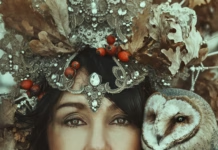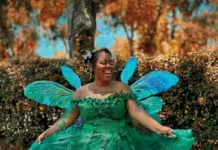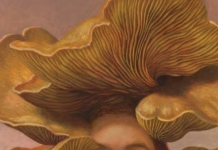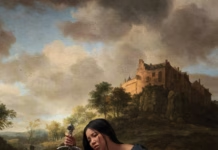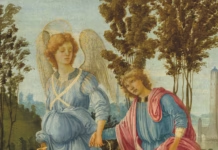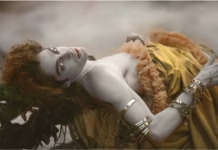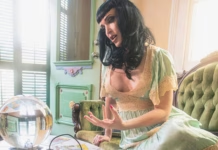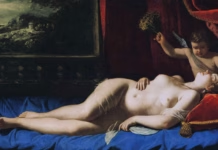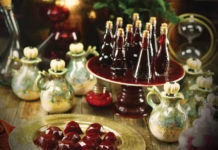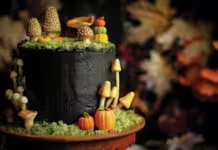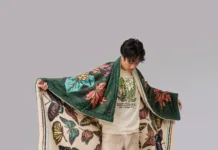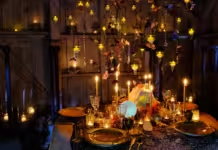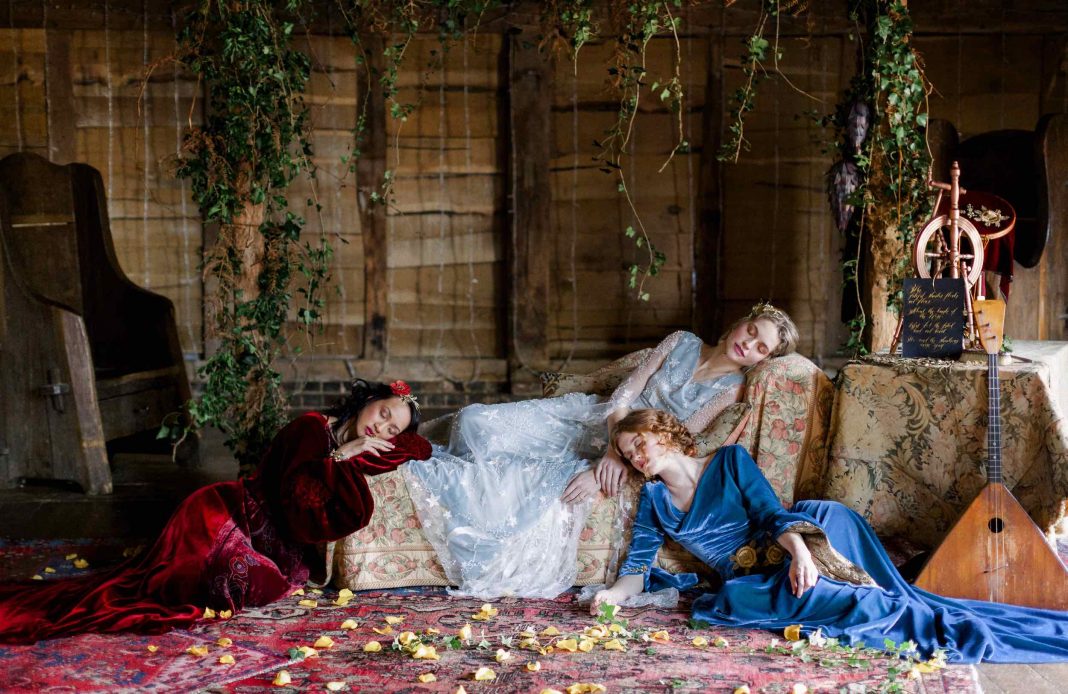Photography by Jo Bradbury Photography
Joanne Fleming’s sensibilities are not a surprise. The British designer’s sumptuous, sensual wedding and evening gowns appear nothing so much as the costumes created in the mind eye’s during a particular lush and fanciful fever dream. Perhaps even the kind of vision experienced under an enchanted slumber, like that of Sleeping Beauty’s—filtered through the imagination of Pre-Raphaelite painter Edward Burne-Jones. His Legend of Briar Rose series helped inspire the recent shoot of Fleming’s work seen on these pages. Fleming communicates like she designs, in a rich panoply of evocative images, ethereal and lovely. Her words betray a way of seeing the world both poetic and a bit archaic, informed by a devotion to beauty and chivalric love.
To wit: asked when her fondness for the work of the Pre-Raphaelites began, she answers in language as delicious as the cakes by Elizabeth Solaru featured in these Briar Rose images must taste. “I date my early enthrallment to the Pre-Raphaelites right back to infant school days when I used to gaze at the print of Waterhouse’s The Lady of Shalott on the hall wall during interminable school assemblies,” she replies. “And I’ve found them a recurring inspiration to varying degrees in the intervening years. At first it was just the paintings themselves that I found entrancing, but during my late teens I remember picking up a book in the library, a biography of Algernon Swinburne prompted by the extremely flattering cover portrait of Swinburne by Rossetti.”
Swinburne, she goes on to explain, “was really one of the earliest proponents of the idea of ‘art for art’s sake,’ and was right at the center of the new ideas and philosophies swirling around the Pre-Raphaelite Brotherhood. As is the way with early love affairs, we drifted apart for a while, but the passion was reignited by a visit to ‘The Cult of Beauty’ exhibition at the V&A Museum ten years ago, a major exploration of the Aesthetic Movement of the 1890s in which of course the Pre-Raphaelites played a starring role. Seeing those jewel-bright romantic visions again in the flesh brought all the old feelings flooding back, and I’ve remained smitten ever since.”
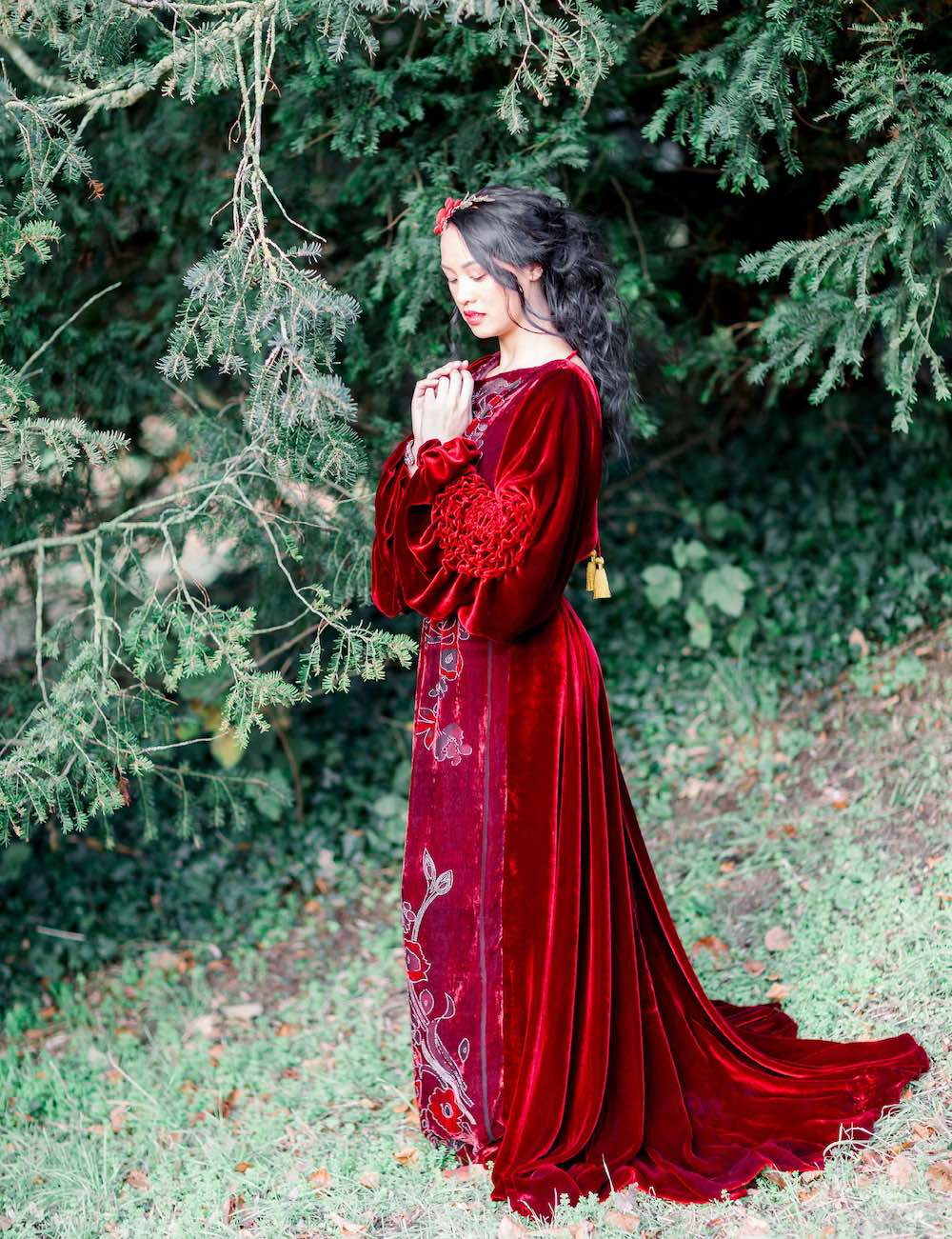
How wonderful it must be to take tea with Fleming—or simply to sit clarifying wedding-gown concepts with her in her studio showroom in Brighton, a city on England’s south coast, which she calls a “fashionable Georgian watering hole … with the glorious early 19th century Royal Pavilion, which sits in the center like an exotic Taj Mahal–themed wedding cake, all domes and turrets and gilded interiors. It is an inspiring place to live … Clifford Musgrave, director of the Royal Pavilion Estate said of the city in 1951, ‘But the atmosphere of Brighton is, more than any other English town, like that of a continental city, with a spirit of elegance and gaiety, and the promise of delight.’ ”
Much like, it can be assumed, Fleming herself. The designer came of age in England’s West Country, attending a girls’ school in Bath, famed for its historic Roman baths and Georgian architecture. Fleming credits the school uniform’s purple cloak with a pixie hood for encouraging her “early delight in dressing up and looking different,” a proclivity no doubt furthered by afternoons spent wandering the city’s Fashion Museum. Despite a brief “flirtation” with biochemistry during her studies at Bristol University, Fleming says “a growing fascination with making extravagant clothes in which to swagger around town from whatever fabrics I could salvage (there was not a pair of velvet curtains in the city safe from my appraising eye) led me to abandon the academic life for the uncertain vagaries of the fashionable life.”
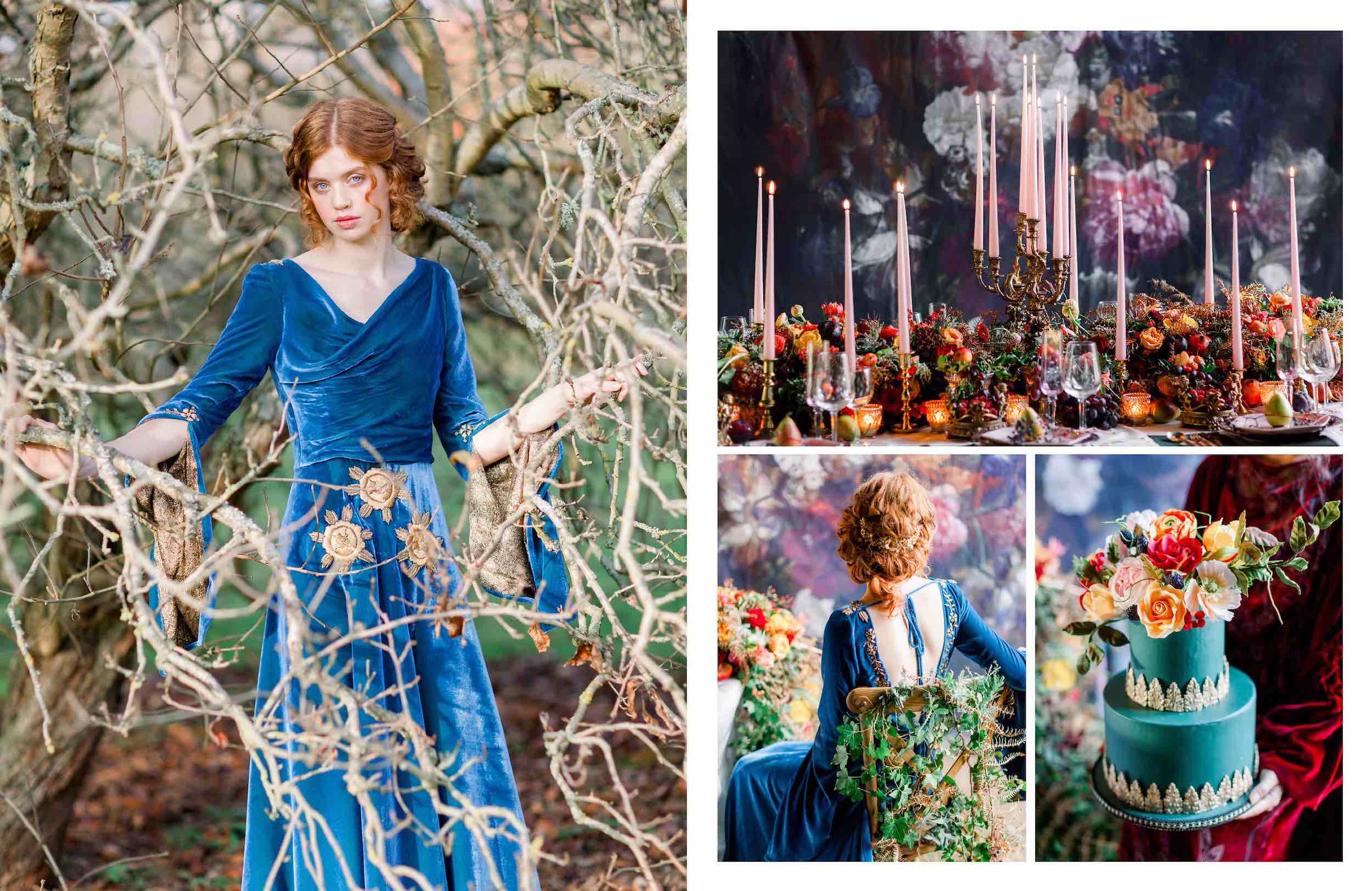
Velvet remains a favored fabric for Fleming, along with oceans of gauzy, graceful chiffon and embroidered silk organza, the most delicate of lace sourced from French purveyors, and great, frothy clouds of tulle. To these decadent fabrics Fleming may hand-sew embellishments on as luxurious as ostrich feathers, Swarovski crystals, or even freshwater pearls. Each gown produced by Fleming’s label—which she founded in 2006, in a tiny garret studio in Brighton’s back streets—is made by Fleming herself, occasionally with a local artisan adding ornamentation. Despite this pedigree, Fleming’s work is surprisingly affordable, with some of her most popular styles (though no two gowns are ever alike) beginning at just £1,500 to £2,000. While a number of in-house fittings are usually part of the process, she will happily work with clients from the U.S. who can’t make it to her studio.
Of course, clients benefit from meeting with Fleming in the flesh, not only for the opportunity to have the designer take measurements herself but simply for the pleasure of her singular company. “I love working with all my clients,” she says, “and am fortunate that these days people have done their research and tend to approach me as they share a similar aesthetic and are not looking for a very traditional wedding gown. They are predisposed to like my signature style, so I get to indulge my natural inclinations toward the romantic. I have a very detailed approach toward working with them to create something that will make them feel like the most beautiful version of themselves and also that they are connected to a long tradition of craftsmanship stretching back through the years. It is my hope that their gown will in its turn get passed onto future generations and will become a precious heirloom.”

Planning, Styling, and Props: Joanne Fleming and Elizabeth Solaru | Venue: Michelham Priory | Photography: Jo Bradbury Photography |
Cakes: Elizabeth’s Cake Emporium | Floral Design: Alice Calcasola-van der List, All in One Season | Candelabras, Gold Glass Bowls, and Cherub Holders: Wedding Day Hire | Hair: Simply Beautiful Wedding Hair | Makeup: Harriet Rainbow | Stationery: Crimson Letters | Shoes: Coast and Koi | Accessories: HF Couture | Gemstone Rings: London Victorian Ring Co. | Gold Rings: Lotta Djossou | Tablecloths: Over the Top Rentals | Models: Emily, Isabella, Selina from MK Model Management





